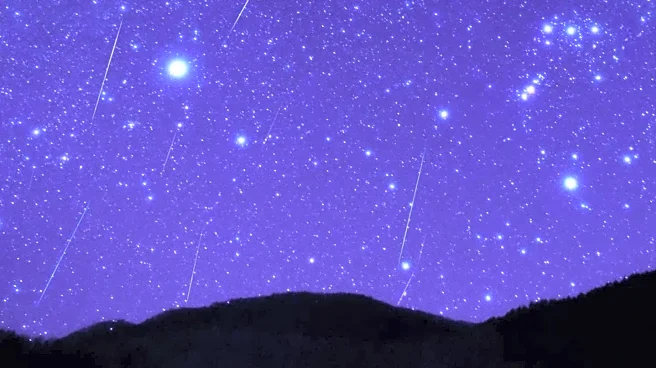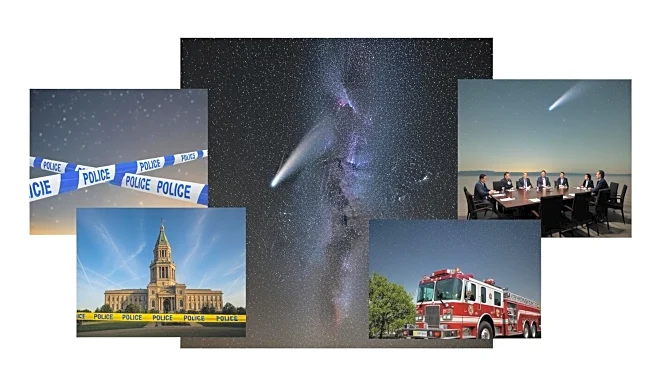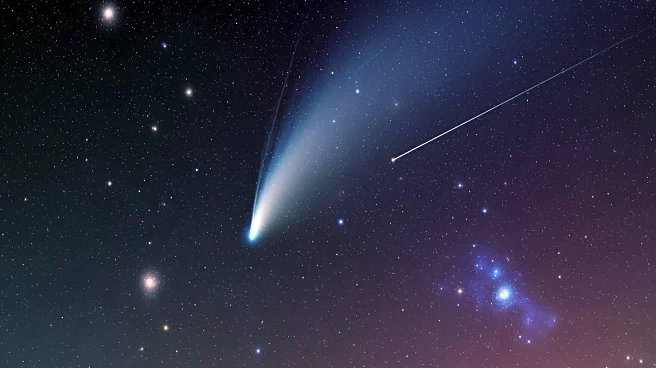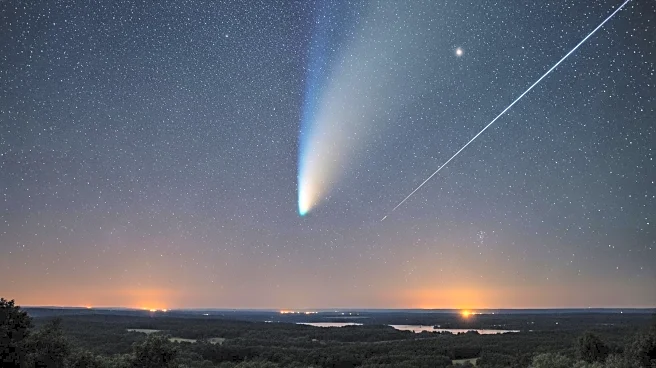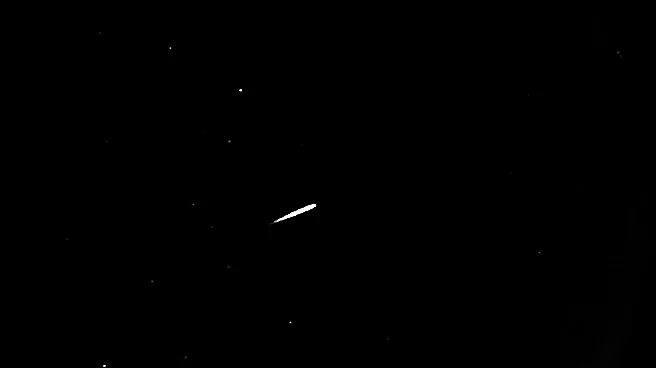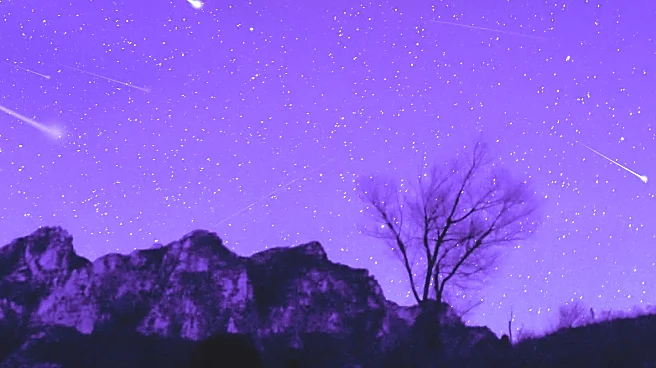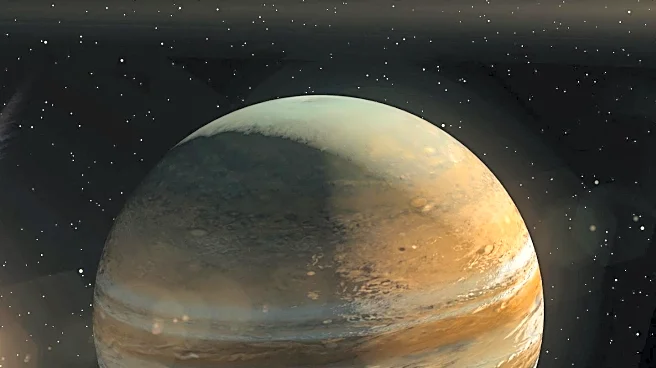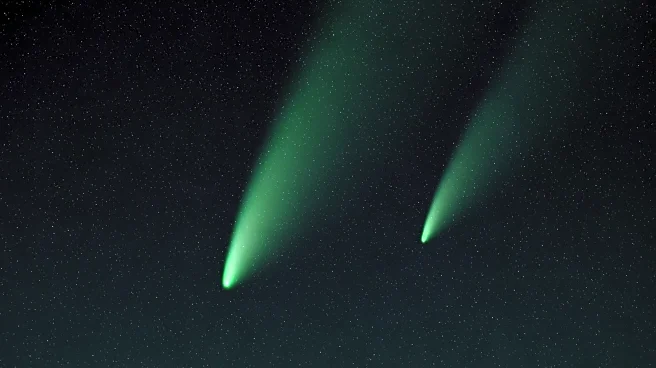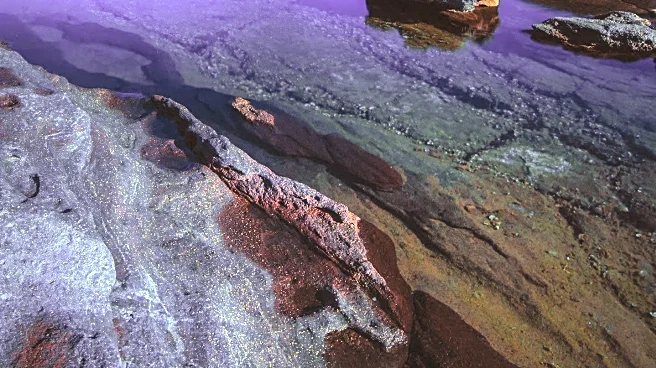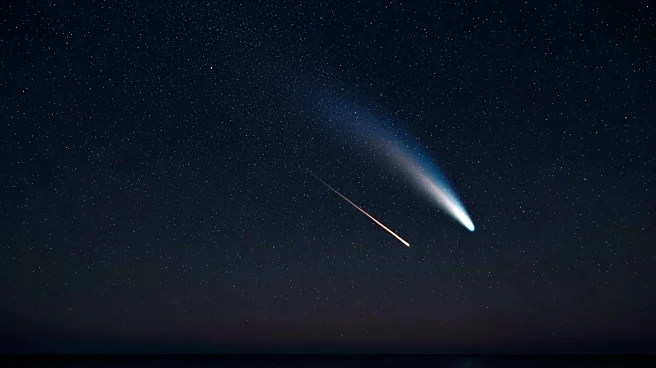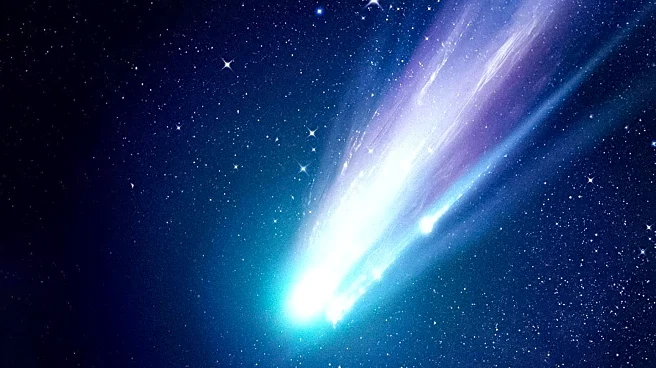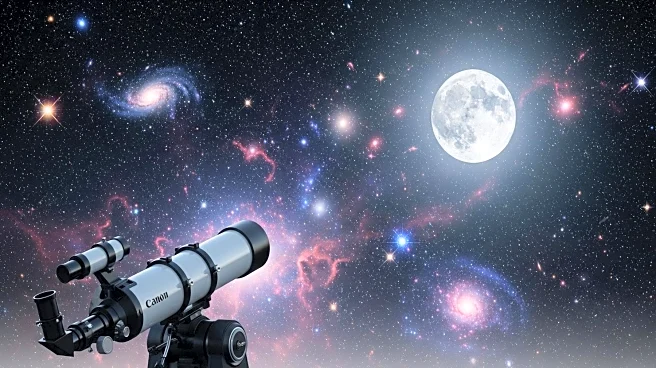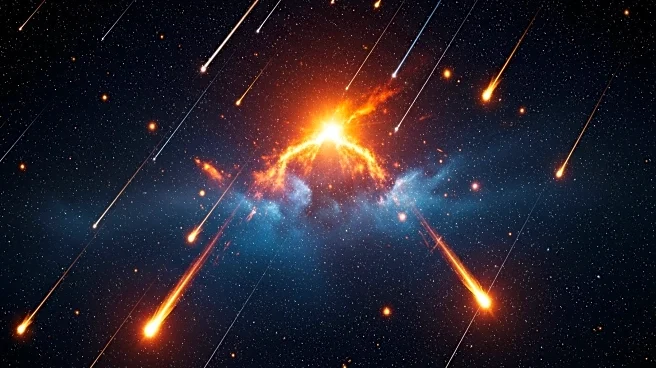What's Happening?
The Orionid meteor shower, originating from debris left by Halley's comet, is set to peak with the arrival of a new moon, offering optimal conditions for viewing shooting stars. Thaddeus LaCoursiere, planetarium program coordinator at the Bell Museum
in St. Paul, Minnesota, notes that viewers can expect to see up to 20 meteors per hour during the peak on Tuesday morning, with viewing opportunities lasting until November 7. The Orionids are one of two major meteor showers caused by Halley's comet, which passes near Earth every 75 years. The meteor shower occurs as Earth passes through the debris left by the comet, resulting in fast-moving space rocks entering the atmosphere and burning up, sometimes leaving bright streaks known as 'trains' in the sky.
Why It's Important?
Meteor showers like the Orionids provide a unique opportunity for the public to engage with astronomy and appreciate natural phenomena without the need for specialized equipment. The event encourages interest in science and space exploration, potentially inspiring future generations to pursue careers in these fields. Additionally, such celestial events can foster community engagement, as people gather in areas away from city lights to witness the spectacle. The Orionid meteor shower, with its potential for bright streaks in the sky, offers a visually stunning experience that can enhance public appreciation for the natural world and the universe beyond.
What's Next?
Following the Orionid meteor shower, the next major celestial event will be the Southern Taurids, expected to peak early on November 5. However, viewing conditions may be less favorable due to the full moon, which can interfere with visibility. Enthusiasts and astronomers will continue to monitor weather conditions to optimize viewing opportunities for upcoming meteor showers. Public interest in these events may lead to increased participation in astronomy-related activities and educational programs, further promoting scientific literacy and awareness.
Beyond the Headlines
Meteor showers like the Orionids highlight the ongoing interaction between Earth and cosmic debris, offering insights into the composition and behavior of comets like Halley's. These events also underscore the importance of preserving dark skies, free from artificial light pollution, to maintain optimal conditions for astronomical observations. The cultural significance of meteor showers, often associated with wishes and folklore, adds a layer of human connection to these scientific phenomena, enriching the experience for viewers.
